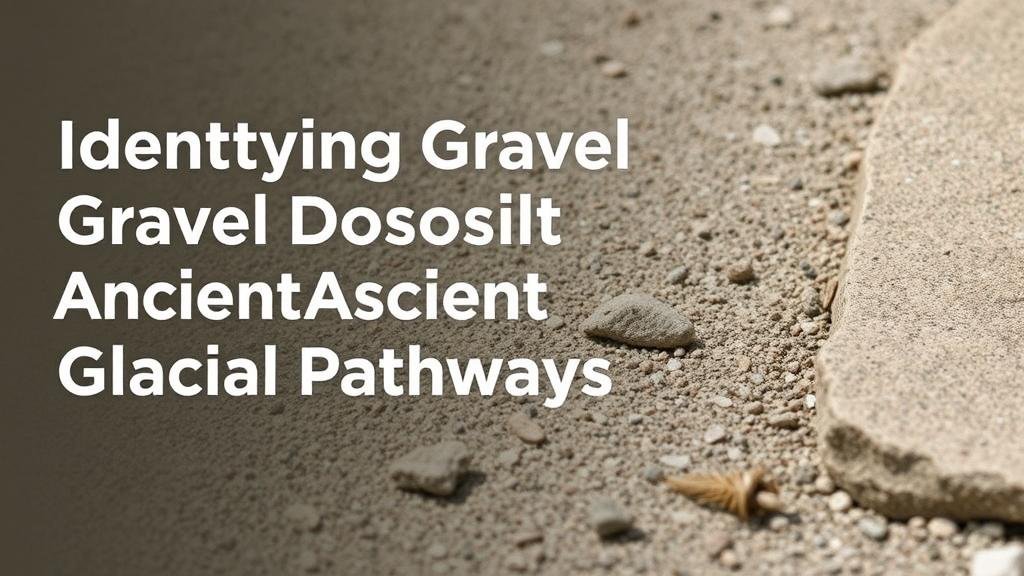Identifying Gravel Deposits Along Ancient Glacial Pathways
Identifying Gravel Deposits Along Ancient Glacial Pathways
Gravel deposits formed by ancient glacial movements serve as a crucial geological record, offering insights into past environmental conditions and landscape evolution. Understanding these deposits not only aids in reconstructing glacial history but also benefits natural resource management and land use planning. This article aims to delineate the methods and significance of identifying gravel deposits along ancient glacial pathways.
The Formation of Gravel Deposits
Glacial gravel deposits primarily originate from the process of glacial erosion and subsequent transport. As glaciers advance, they grind down bedrock, creating a mixture of sediments, including silt, sand, and gravel. The resultant material can be deposited in several ways:
- Outwash plains: Formed by meltwater streams sorting sediments as glaciers retreat.
- Moraines: Accumulations of debris piled up at the edges of glaciers.
- Till: Unsorted glacial debris deposited directly from ice.
The texture and composition of these deposits vary significantly, reflecting the geological characteristics of the source area and the mechanisms of transportation and deposition.
Methods for Identifying Gravel Deposits
Several field methods and analytical techniques are employed for identifying and studying gravel deposits in glacial settings:
- Field Mapping: Detailed geological mapping allows scientists to delineate the extent and characteristics of gravel deposits. This process often includes GPS-enabled surveys to accurately document the locations.
- Geomorphological Analysis: The study of landforms associated with glacial activity helps to locate areas where deposits might be found. Features such as drumlins and esker systems often indicate underlying gravel deposits.
- Sediment Sampling: Collection and analysis of sediment cores provide vital insights into the stratigraphy and composition of the deposits.
Each of these methods contributes valuable data to build a comprehensive understanding of ancient glacial pathways.
Case Studies: Real-World Applications
Two notable case studies illustrate the significance of identifying gravel deposits along ancient glacial pathways:
- The Great Lakes Region: Research in areas surrounding the Great Lakes in North America has unveiled extensive outwash plains that are pivotal for studying regional paleo-climate conditions. These studies have indicated that variations in sediment size and composition correspond to historical climate fluctuations, influencing both hydrology and sediment transport patterns.
- Scandinavian Glaciation: Investigations of glacial deposits in Scandinavia revealed distinct glacial phases characterized by rapid advances and retreats. Detailed sedimentological analyses have facilitated reconstructions of past ice flow dynamics, providing insights crucial for ice sheet modeling.
The Importance of Identifying Gravel Deposits
Identifying gravel deposits yields several practical applications, including:
- Natural Resource Management: Gravel deposits serve as potential sources for construction materials. Determining their locations can support sustainable resource extraction strategies.
- Land-use Planning: Understanding the distribution of these deposits informs infrastructure development and helps avoid environmental degradation.
- Paleoclimatic Research: Analyzing gravel deposits enhances our understanding of historical climate conditions, aiding in predictive models for future climate scenarios.
Conclusion
Identifying gravel deposits along ancient glacial pathways provides a multifaceted understanding of geological history, resource management, and climate science. By employing a combination of mapping techniques, morphological analyses, and sediment sampling, researchers can piece together the stories embedded in the landscape. Continued exploration in this field will enrich our knowledge of Earths changing environments and support sustainable practices moving forward.
For researchers and land planners, the actionable takeaway from this study underscores the importance of integrating geological research with practical applications to enhance both scientific understanding and societal benefit.



